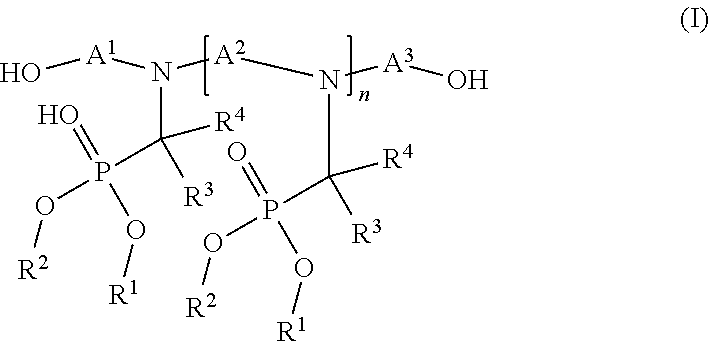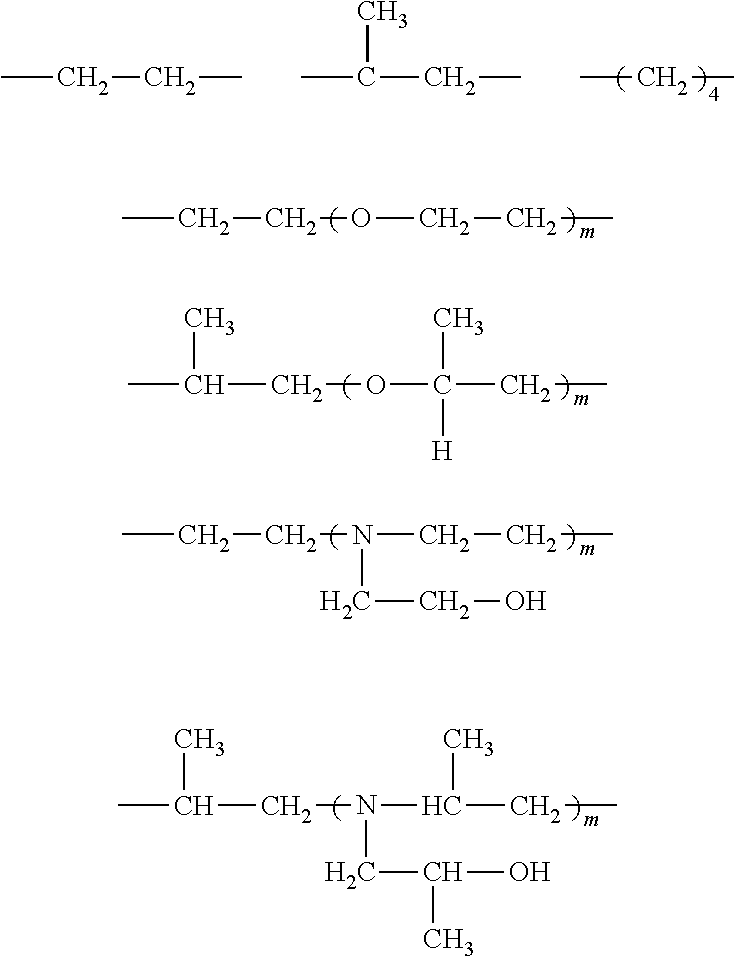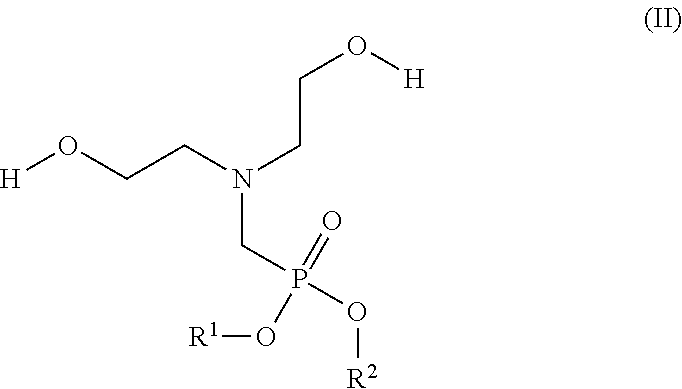Flame-resistant polymer polyol dispersion
- Summary
- Abstract
- Description
- Claims
- Application Information
AI Technical Summary
Benefits of technology
Problems solved by technology
Method used
Image
Examples
examples
[0092]I) Flame Resistant (FR) Polyol Synthesis
[0093]Apparatuses Used:
T 50 ULTRA-TURRAX ®High-performance dispersing instrument.Hennecke Labfoam ®Semi continuous operating laboratory plantfor test series and laboratory purposes.
[0094]Chemicals Used:
Polyol AGlycerin started polyoxypropylene polyol capped withethylene oxide with a functionality of approximately 3,and LOH of 33-38 mg KOH / g and a weight averagemolecular weight of Mw = 4800 g / mol.Polyol BReactive polymer modified polyol with a solid contentof 10%, a functionality of approximately 3, and LOHof 47-52 mg KOH / g and a weight average molecularweight of Mw = 4850 g / mol.Polyol CReactive polymer modified polyol with a solid contentof 20%, a functionality of approximately 3, and LOHof 50-57 mg KOH / g and a weight average molecularweight of Mw = 4850 g / mol.Polyol DReactive styrene-acrylonitrile copolymer modifiedpolyol with a solid content of 40%, a functionalityof approximate 3, and LOH of 20-23 mgKOH / g and aweight average molecular...
example no.1-11
Example No. 1-11
[0097]General Procedure for Manufacturing of 10 kg FR-Polyol:
[0098]The base polyol is transferred together with the FR olamine and the gelling catalyst in a dried 15l glass reactor, equipped with a stirrer, a dispersing device (Ultraturrax T50), a thermometer and a dropping funnel. After exclusion of air and moisture by purging with nitrogen, the reaction mass is thoroughly mixed for 10 minutes whereby the temperature increases to 35-45° C.
[0099]Then the Ongronat® 1080 is added slowly during a period 30 minutes and the temperature rises to 55-75° C. while the reaction mixture starts immediately to whiten. The resulting polyol dispersion is then slowly stirred for another two hours and finally stored for 24 hours with exclusion of air and moisture.
example no
[0100]FR-Polyols with Different Molar Ratios (equivalents ratios) NCO:OH
TABLE 2Example No.1a1b1c1dPolyol A [g]8419.718352.718285.728218.72Fr olamine [g]1000.001000.001000.001000.00Kosmos ® 19 [g]10.8410.8410.8410.84Ongronat ®1080 [g]569.45636.45703.44770.44Molar Ratio NCO:OH0.850.951.051.15T50 mixing [rpm]5000500050005000Solid Content [wt. %]15.716.417.017.7P - Content [wt. %]1.211.211.211.21N - Content [wt. %]1.541.651.751.86Dynamic Viscosity [mPa · s]2097277437869436LOH [mgKOH / g]36.634.830.425.6
PUM
| Property | Measurement | Unit |
|---|---|---|
| Temperature | aaaaa | aaaaa |
| Temperature | aaaaa | aaaaa |
| Fraction | aaaaa | aaaaa |
Abstract
Description
Claims
Application Information
 Login to View More
Login to View More - R&D
- Intellectual Property
- Life Sciences
- Materials
- Tech Scout
- Unparalleled Data Quality
- Higher Quality Content
- 60% Fewer Hallucinations
Browse by: Latest US Patents, China's latest patents, Technical Efficacy Thesaurus, Application Domain, Technology Topic, Popular Technical Reports.
© 2025 PatSnap. All rights reserved.Legal|Privacy policy|Modern Slavery Act Transparency Statement|Sitemap|About US| Contact US: help@patsnap.com



